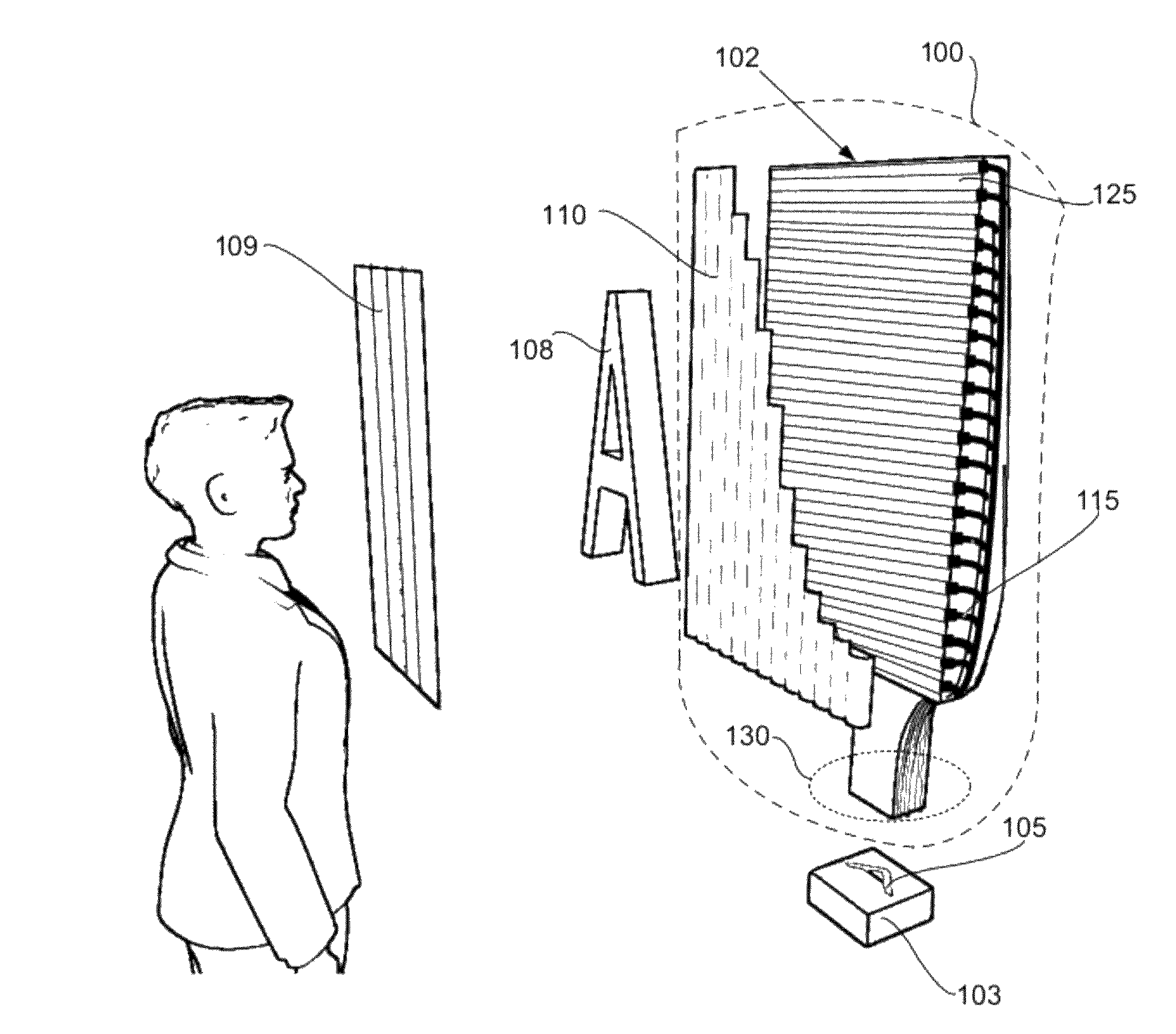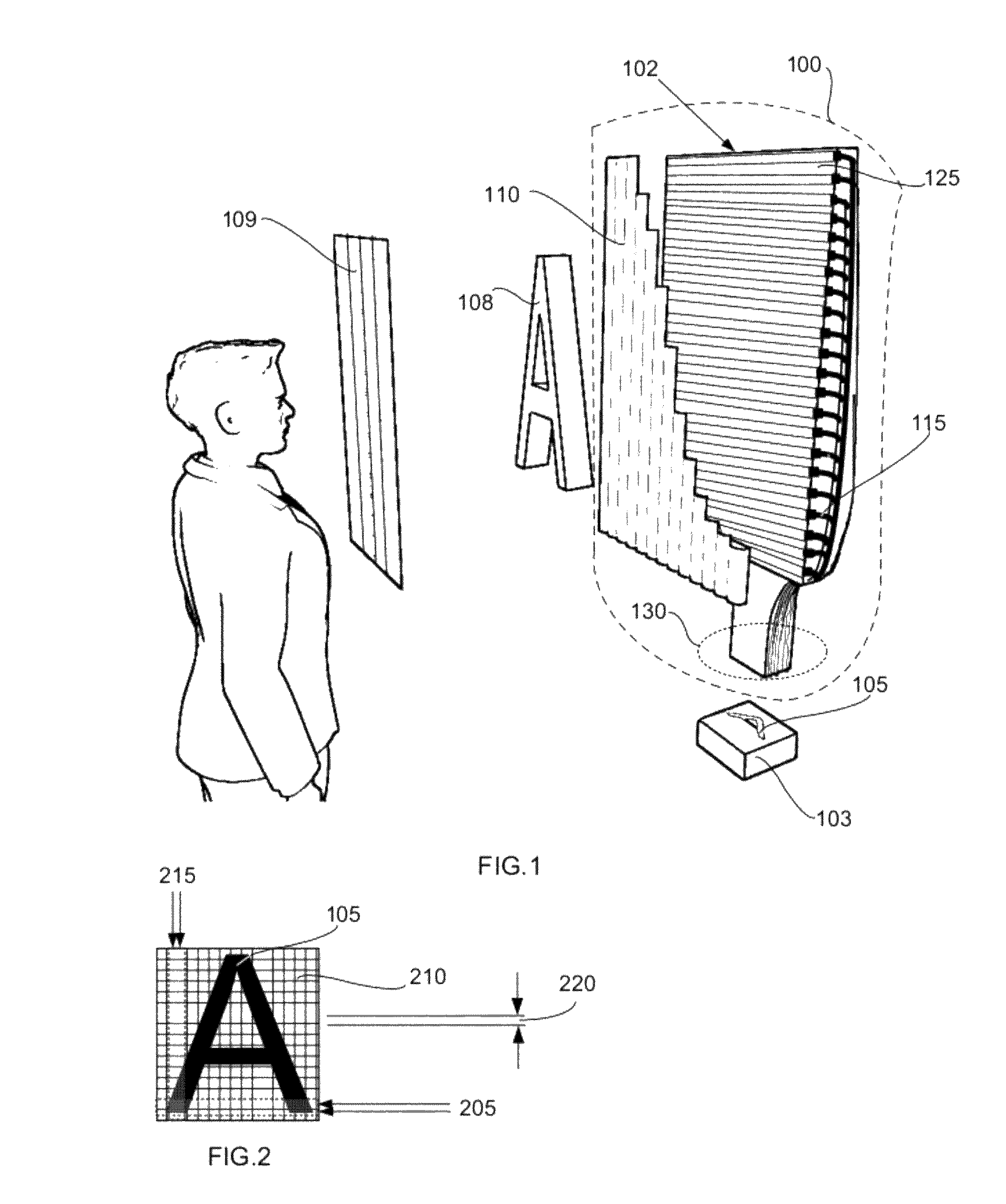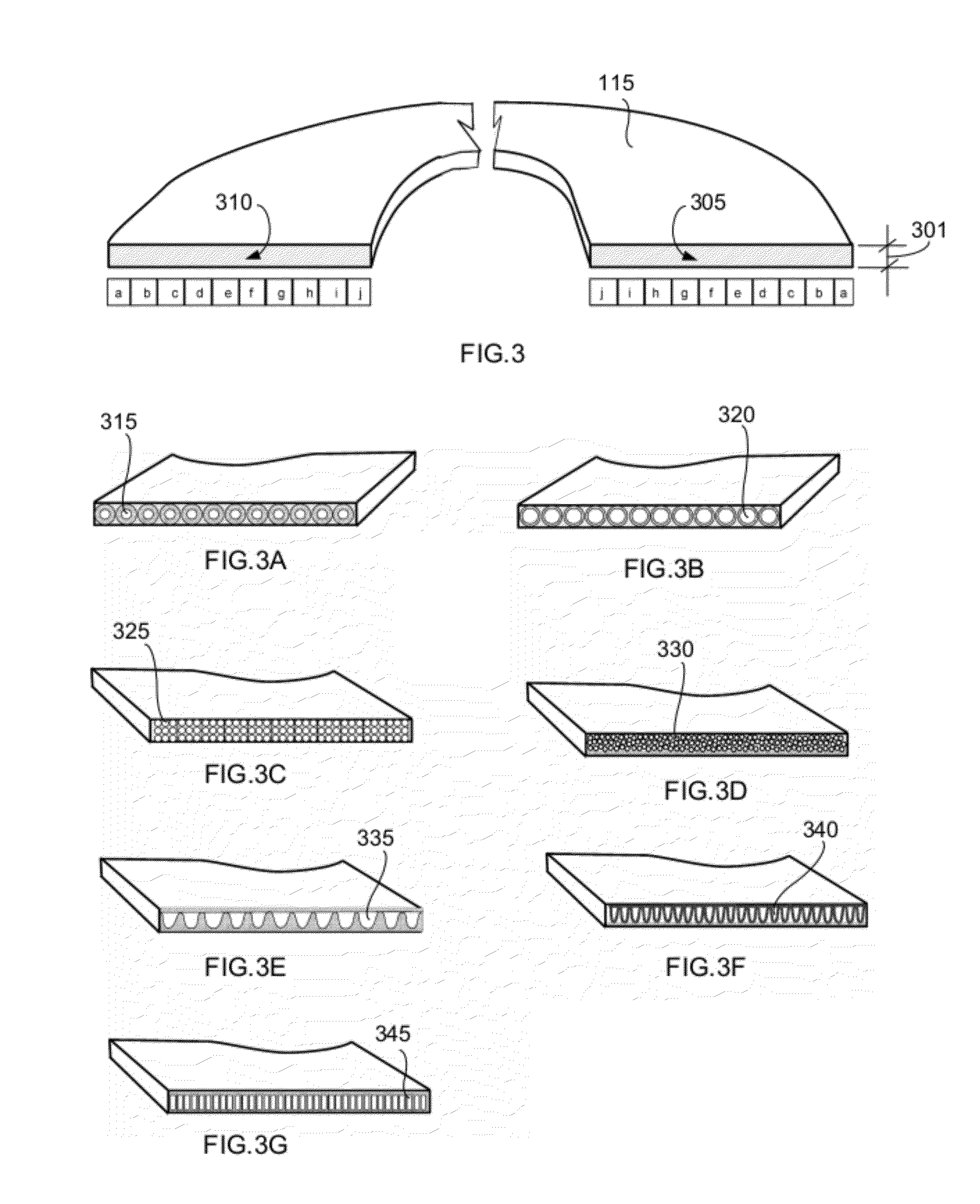Image transforming device
a technology of transforming device and image, which is applied in the field of optical systems, can solve the problems of difficult installation setup, difficult to find the right position, and undesirable three-dimensional (3d) image, and achieve the effects of low cost, high resolution and convenient manufacturing in large-series
- Summary
- Abstract
- Description
- Claims
- Application Information
AI Technical Summary
Benefits of technology
Problems solved by technology
Method used
Image
Examples
example 1
[0083]The principles of an operational image transforming device (100) involve receiving a projected two-dimensional image (105) made up of N×M pixels into M optical waveguides (405) within the receiving end (305) of each ribbon (115) in the stack (130) of ribbons. The received projected two-dimensional image (105) is then transformed to (N×S)×(M / S) pixels on the screen (102) where S is a number greater than one. For example, with S=4, which indicates four ribbons are placed adjacent to each other at their output end (310). If the projected two-dimensional image (105) has an array of 1920×1080 pixels, then the screen (102) emits an array of 1920×4=7680 pixels horizontally by 270 pixels vertically. This in contrast with current available optical fiber arrays like tapers and array-type light guiding bundles, which don't change the resolution.
[0084]The image transforming device (100) may include a lenticular (910) placed adjacent to the screen (102). Creating an auto-stereoscopic image...
example 2
[0088]FIG. 9 illustrates how the end of each ribbon (115) is cut into a shape to improve the 3D image quality. Because each ribbon (115) is very thin, on the order of 0.05 mm, they can be cut with for example a 10 Watt carbon-dioxide laser using a lens with a 10 mm focal length that focuses the beam into a spot of 0.034 mm with a 0.2 mm focus depth. Cutting ribbons in this manner is not only fast and precise but also create a clean ribbon cross section. Adjusting the distance (905) between the emitting pixels and the lenticular (910) in this way can improve the viewing experience for an auto-stereoscopic display by reducing ghost images for example. The end face of the ribbon does not need to be cut perpendicular to the length of the ribbon, but may be cut at an angle such as the Brewster angle to improve the light coupling efficiency.
[0089]When the projected two-dimensional image (105) is projected in changing colors, the image transforming device (100) may take advantage of these ...
example 3
[0101]The image transforming device (100) in an auto-stereoscopic display can create an auto-stereoscopic image with (N×S / H) pixels horizontally and (M / S) pixels vertically, where H is the number of viewing zones, N is the number of pixels in the horizontal direction of the two-dimensional image (105), M is the number of pixels in the vertical direction of the two-dimensional image (105), and S is the first quantity of ribbons placed adjacent to each other on the spacer material (125) at the output end (310). The table below illustrates how the image transforming device (100) receives 0.05 mm square pixels can create different auto-stereoscopic displays using a received image of 1920×1080 pixels:
[0102]
H = # lenses = Vertical Screen Sviewing zonesHorz. Res.Resolutionsize23212054019.2 × 86.4 cm33218036028.8 × 57.6 cm42432027038.4 × 32.4 cm43224027038.4 × 32.4 cm
[0103]Because there are no electrical connections on or in the image transforming device (100) and all ribbons and spacers at...
PUM
 Login to View More
Login to View More Abstract
Description
Claims
Application Information
 Login to View More
Login to View More - R&D
- Intellectual Property
- Life Sciences
- Materials
- Tech Scout
- Unparalleled Data Quality
- Higher Quality Content
- 60% Fewer Hallucinations
Browse by: Latest US Patents, China's latest patents, Technical Efficacy Thesaurus, Application Domain, Technology Topic, Popular Technical Reports.
© 2025 PatSnap. All rights reserved.Legal|Privacy policy|Modern Slavery Act Transparency Statement|Sitemap|About US| Contact US: help@patsnap.com



